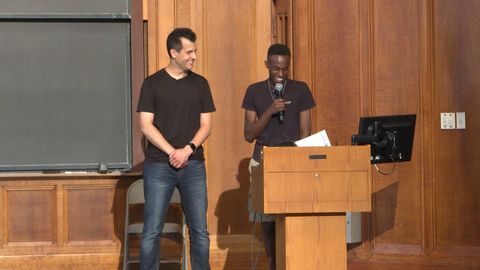
Subtitles & vocabulary
CS50 2018 - Lecture 1 at Yale - Scratch
00
林宜悉 posted on 2020/04/04Save
Video vocabulary
literally
US /ˈlɪtərəli/
・
UK
- Adverb
- In a literal manner or sense; exactly as stated.
- Used for emphasis to describe something that is actually true, often to highlight surprise or intensity.
B1
More sort
US /sɔrt/
・
UK /sɔ:t/
- Transitive Verb
- To organize things by putting them into groups
- To deal with things in an organized way
- Noun
- Group or class of similar things or people
A1TOEIC
More apparently
US /əˈpærəntlɪ/
・
UK /əˈpærəntli/
- Adverb
- According to what you heard; from what can be seen
A2TOEIC
More Use Energy
Unlock All Vocabulary
Unlock pronunciation, explanations, and filters
